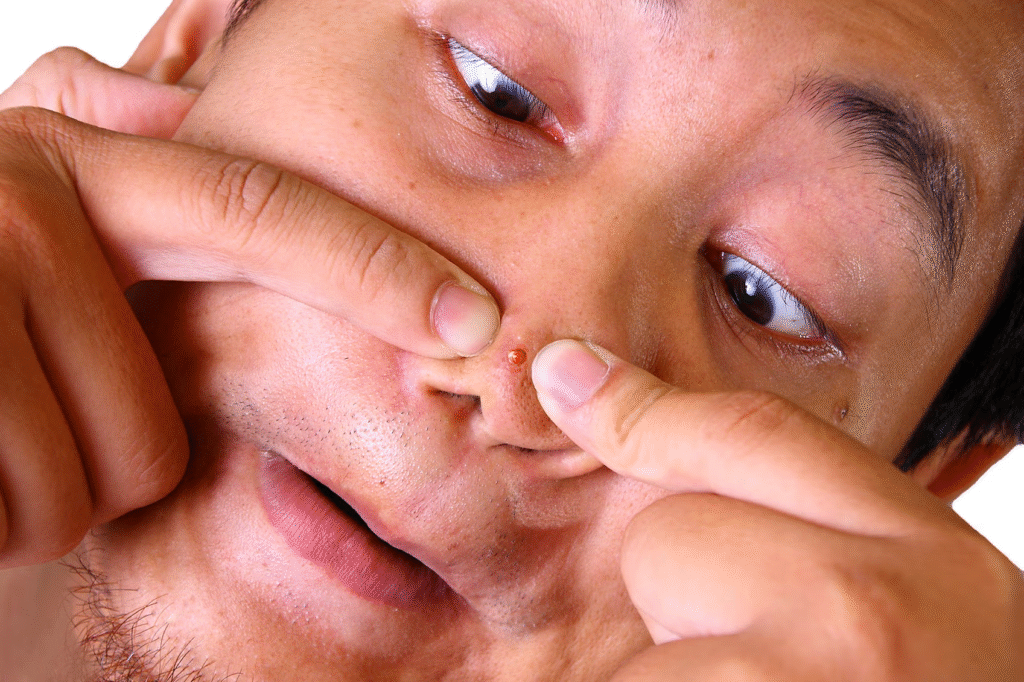3.. Why You Keep Getting Pimples Inside Your Nose, and What to Do About It
Getting a pimple anywhere on your face (or body, for that matter) is far from fun — but an annoyingly gross, achy, and tough-to-treat pimple inside the nose may just be the worst of the bunch. Sure, it might not be as visible as a blemish that crops up on your forehead, but its very location can make these bumps super uncomfortable and tough to treat in the way you would address zits elsewhere.Here’s the thing, though: What you think are plain old pimples in your nose may not actually be what they seem. Ahead, dermatologists explain why there are pimples inside your nose, how to tell if they’re actually zits, and what you can do about them.
What Causes Pimples Inside the Nose?Let’s start with a quick anatomy lesson. It’s important to understand how differences in the skin inside your nose contribute to the development of a pimple there.”The inside of your nose has a lining that’s covered in both mucus and small hairs, which work to capture dust, germs, and other small particles so that they can’t get into the lungs,” explains Annie Gonzalez, M.D., a board-certified dermatologist at Riverchase Dermatology in Miami. However, the actual skin cells inside the nose are much smaller than those on the rest of your face — and the outermost layer, the stratum corneum, is thin to non-existent, adds Tracy Evans, M.D., a board-certified dermatologist and medical director of Pacific Skin and Cosmetic Dermatology in San Francisco. “It can be more prone to bacteria that may otherwise have a hard time entering the skin elsewhere,” she says.

ICYDK, in general, pimples pop up when a combo of bacteria, oil, and dead skin cells end up clogging a pore that then becomes inflamed and infected.Similarly, when the mucus membrane inside the nose dries out, people tend to want to pick their nose, and this also transfers bacteria, says Ife J. Rodney, M.D., a board-certified dermatologist and the founding director of Eternal Dermatology in Fulton, Maryland. Weather changes and low humidity can dry out the mucus membrane, which can lead to dried pieces of mucus, aka boogers, that you might feel inclined to pick and remove.
What Pimples Inside the Nose Can Look LikeIt’s very possible to get a “typical” pimple inside the nose, which could range from a whitehead to a painful red, cystic acne bump, says Dr. Rodney. Cysts and pustules are the most common types of nose pimples, as they tend to have more of a bacterial component than other varieties, she adds. That said, it’s more likely that a blemish in your nose is not a pimple at all, but rather a sign of a different condition, notes Dr. Gonzalez. One option is nasal folliculitis or nasal vestibulitis, which is essentially an infection of those tiny hair follicles found in your nose. It typically manifests as a red, inflamed bump or a collection of red or white bumps at the openings of the nostrils and can be brought on by picking or blowing your nose too often, she explains.